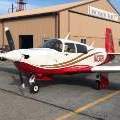Pulling by the Prop
-
Members Online
- NickG
- Matt Seegers
- PeteMc
- 231DF
- Fly Boomer
- ericrynehess
- MooneyAcolyte
- bixmooney
- ElkoRandy20J
- Paul Thomas
- Z W
- tim165
- MooneyMax
- AndrewDash3973
- Nico1
- Mikey30V
- Aerodon
- FlyingDude
- Jim F
- N201MKTurbo
- 47U
- IvanP
- eman1200
- Raistlin
- Parker_Woodruff
- hoot777
- TangoTango
- Skyland
- Yetti
- HancockAviation
- SoccerCA
- redbaron1982
- 00-Negative
- GeeBee
- Stubby


Recommended Posts